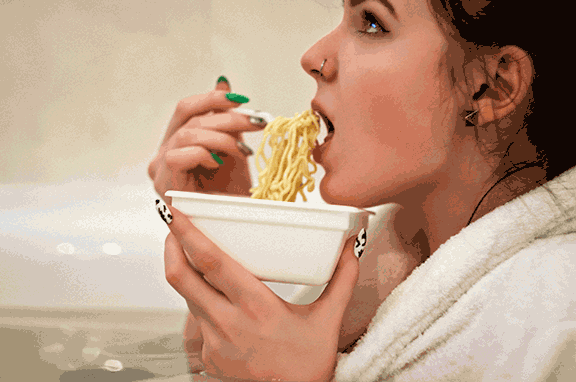A QUESTION FOR THE DOCTOR: Dr. A, My 12-year-old daughter struggled with being overweight until she hit a growth spurt. Her weight stayed the same but she grew a few inches. Nobody has ever said anything about her weight, but she recently became obsessed with her weight, how she looks, constantly feeling that she is fat, reading food labels, skipping meals. She eats minimally. She started exercising several times a day, and started to avoid carbs. In two months, she lost 20 pounds. We have been encouraging her to eat, but she says that she gets full quickly and is not hungry. We suspect that she may be purging, as she immediately goes to the bathroom after meals. She is no longer joining us for meal time and seems to come up with excuses. We fear she has developed one or more eating disorders, what should we do? – A concerned parent
ANSWER: It sounds like you are in tune with your adolescent and are aware of the changes in her eating behaviors recently. While this article provides general information about eating disorders, it is not medical advice. Please have your daughter see a trained mental health professional to assess her further for an eating disorder in order to provide you with specific treatment recommendations. The sooner your adolescent gets help, the better.
Types of Eating Disorders
There are different types of eating disorders based on the Diagnostic and Statistical Manual of Mental Health Disorders (DSM5). Patients often have symptoms from different categories of eating disorders and don’t fall into one category, at least, not all the time. Still, these eating disorders pose similar dangers to patients’ health. Eating disorder symptoms also may change over time.
Before we go into the types of eating disorders below, it is important to assess the adolescent for any other mental health disorders in addition. Adolescents with eating disorders may also be struggling with depression, anxiety, obsessive compulsive disorder (OCD), post-traumatic stress disorder (PTSD), substance abuse and self injurious behavior.
Now a look at the different types of eating disorders.
Bulimia Nervosa
Patients have obsessive and irrational thoughts about their body, food and exercise. They will start with “a diet” but then compulsively binge eat. They set very rigid standards against certain “bad foods”. As they feel pressure from these self imposed standards, they violate their own rules and binge. They then feel a distress due to having “overeaten” and as a result compensate for by vomiting, fasting, excessive exercise, laxative or diuretic use.
Binge Eating Disorder (B.E.D.)
Patients engage in episodes of eating large amounts of food in a short period of time, accompanied by feeling out of control, and continuing to binge eat despite feeling overly full. For example, they may eat several large pizzas in one setting. Patients typically think of constantly dieting while feeling a compulsion to constantly eat. Patients typically struggle with shame, anxiety and guilt around eating. B.E.D. can be found in people with bodies of any size.
Anorexia Nervosa
Patients have a distorted view of their bodies, obsessive and illogical thoughts about food and exercise and an irrational fear around eating. Their irrational fear also involves fear of weight gain, and so eat too little and are likely to have low body weight as a result. However, there are some patients who have normal or larger body weight. Patients eat a narrow range of food, and become extremely anxious around eating high caloric food.
Avoidant/Restrictive Food Intake Disorder
Patients eat too little to maintain their nutritional needs but do not have the body image concerns seen in anorexia nervosa.
Other Specified Feeding and Eating Disorder
This diagnosis covers eating disorders that do not meet specifical criteria for anorexia nervosa, binge eating disorder or bulimia nervosa, but cause significant distress and impairment.
Orthorexia Nervosa
It is not listed in DSM5 but has been proposed as a diagnosis. The individual strictly adheres to certain practices of “eating healthy”, so much that it negatively impacts health, school work and social life. S/he restricts food in order to “to be healthy” and not for fear of gaining in patients with anorexia nervosa.
Muscle Dysmorphia
While this is not recognized in DSM5, some researches believe that it is a manifestation of anorexia nervosa disorder and is more common in males. Patients have similar rigid thoughts about food and body, but they desire a bigger and more muscular body. They are likely to focus on weight lifting, eating high protein foods and use supplements or steroids.
Common challenges faced by parents of children with eating disorders
Parents face challenges when supporting adolescents in recovery.
Overwhelmed Parents
Eating disorders can be overwhelming. Your role as a parent didn’t stop when the additional responsibly of supporting your adolescent with an eating disorder got added to your plate. Ensure you do self-care and reach out to your support system and other parents who have been there. Asking for professional help when you need it models a healthy behavior for your adolescent.
Tolerating a Teen’s distress
Helping your adolescent with their recovery means requiring your teen to repeatedly face the very situation that distresses them. You will find your comfort level of what needs to be done for your teen and when. Remember that your teen’s distress is temporary.
Fear of Ruining your teen’s spirit
Prioritizing recovery in the long run bring long term gains in the face of temporary discomfort. Remember that an untreated eating disorder may permanently cause irreversible physical and emotional consequences.
Fear of Destroying your relationship with your teen
Keep your eyes on the prize and long-term goals. Relationships are damaged when parents and children remain chronically ill and don’t go into recovery. Once your adolescent is in recovery and becomes an adult, your child’s outlook on what you did for them will be positive and appreciative.
Coping strategies when your child has an eating disorder
It is important as parents support their adolescents in their recovery that both parents and adolescents build distress tolerance. Below are some techniques that parents can try to help themselves and their children. Remember that the best way to teach your adolescent new skills is by modeling the behavior.
- Identifying and labeling feelings: Acknowledging and labeling a feeling makes it more manageable. You can model that behavior to your teen.
- Talking to someone: Talking to another parent who has been in your same boat is a great source of support. Don’t keep your problems and thoughts to yourself and reach out to your community.
- Journaling: Writing can help you get thoughts off your chest. It doesn’t have to be long. You can start by doing it for a few minutes a day.
- Relaxation and Meditation: You can find several meditation exercises online, and can do them as a family.
- Music: Listening to music helps calm the nervous system and promotes social engagement.
- Stress Balls: Using stress balls provides distraction and sensory input to the body to relax and release physical tension.
Resources
- Click here to find supplemental materials, including forms and worksheets.
- When Your Teen has an Eating Disorder
- 8 Keys to Recovery From An Eating Disorder




